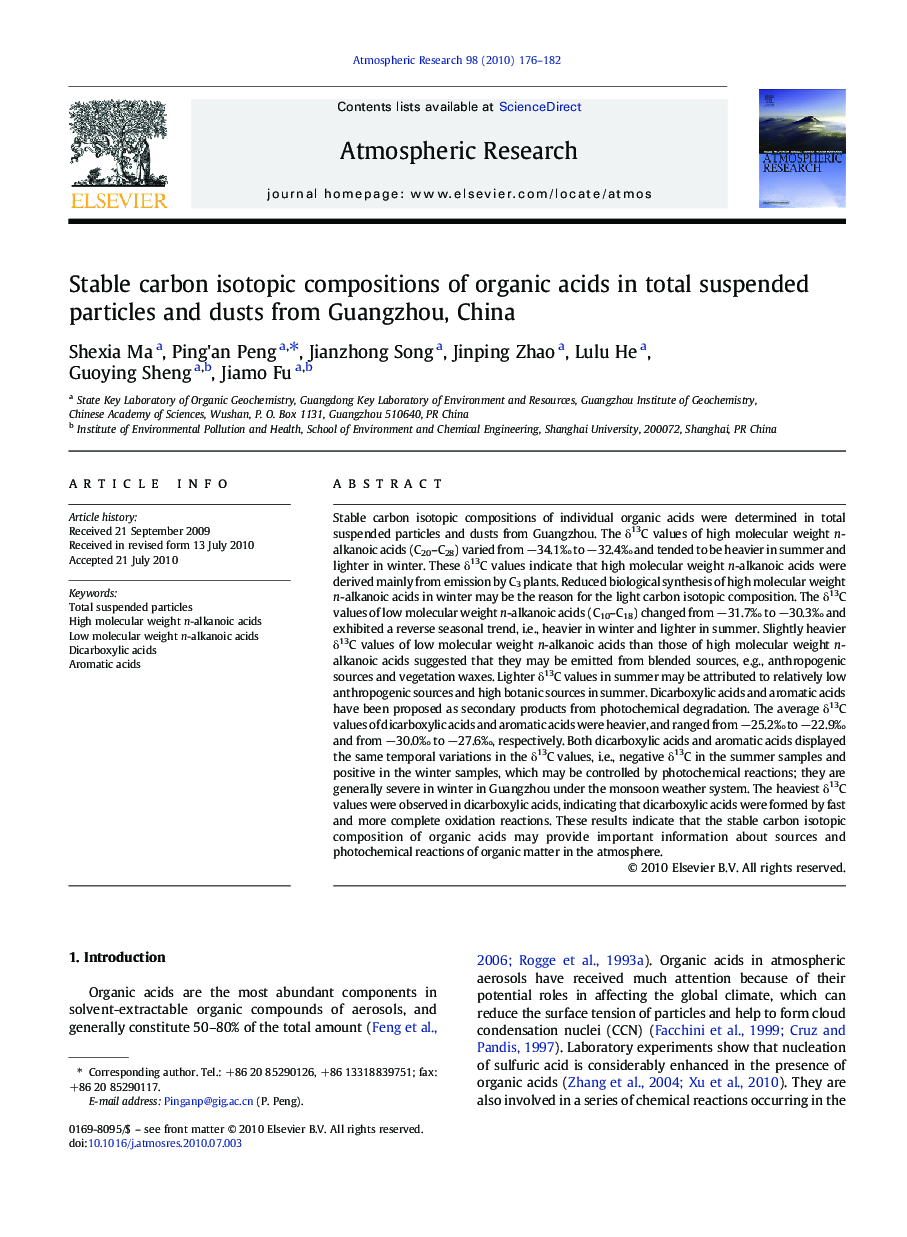| Article ID | Journal | Published Year | Pages | File Type |
|---|---|---|---|---|
| 4450583 | Atmospheric Research | 2010 | 7 Pages |
Stable carbon isotopic compositions of individual organic acids were determined in total suspended particles and dusts from Guangzhou. The δ13C values of high molecular weight n-alkanoic acids (C20–C28) varied from −34.1‰ to −32.4‰ and tended to be heavier in summer and lighter in winter. These δ13C values indicate that high molecular weight n-alkanoic acids were derived mainly from emission by C3 plants. Reduced biological synthesis of high molecular weight n-alkanoic acids in winter may be the reason for the light carbon isotopic composition. The δ13C values of low molecular weight n-alkanoic acids (C10–C18) changed from −31.7‰ to −30.3‰ and exhibited a reverse seasonal trend, i.e., heavier in winter and lighter in summer. Slightly heavier δ13C values of low molecular weight n-alkanoic acids than those of high molecular weight n-alkanoic acids suggested that they may be emitted from blended sources, e.g., anthropogenic sources and vegetation waxes. Lighter δ13C values in summer may be attributed to relatively low anthropogenic sources and high botanic sources in summer. Dicarboxylic acids and aromatic acids have been proposed as secondary products from photochemical degradation. The average δ13C values of dicarboxylic acids and aromatic acids were heavier, and ranged from −25.2‰ to −22.9‰ and from −30.0‰ to −27.6‰, respectively. Both dicarboxylic acids and aromatic acids displayed the same temporal variations in the δ13C values, i.e., negative δ13C in the summer samples and positive in the winter samples, which may be controlled by photochemical reactions; they are generally severe in winter in Guangzhou under the monsoon weather system. The heaviest δ13C values were observed in dicarboxylic acids, indicating that dicarboxylic acids were formed by fast and more complete oxidation reactions. These results indicate that the stable carbon isotopic composition of organic acids may provide important information about sources and photochemical reactions of organic matter in the atmosphere.
